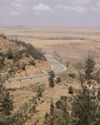Historically part of Northumberland, this Tyneside city’s fortunes have ebbed and flowed–but its residents have always embraced change.

Located on the northern bank of the RiverTyne, this proud city in the north-east of England originated in the Roman settlement of Pons Aelius, which at its peak had a populations of around 2000. Its name is from the 11th century, however, coming from a castle built by William the Conquerer’s son Robert Curthose, around 1080; prior to this, it was known as Monkchester, and was part of the kingdom of Northumbria.
Henry II had first made Newcastle a corporation; Elizabeth I then granted it a new charter in 1589. But in the middle ages, a high stone wall was built around Newcastle to protect it from Scottish invaders – it was successfully defended from the Scots three times within the 14th century.
In early medieval times, Newcastle prospered. The main commodity produced locally was wool, but trading in cloth, fish and hides also became popular. There was a well-established export route for wool from Newcastle, the Borders and Scotland to the Low Countries, such as the Netherlands. Newcastle’s traders, along with those from Berwick-upon-Tweed, had export licences from the crown, which were renewed regularly, to ship wool directly to the Netherlands. These licences created a strong industry, and some successful local woollen merchants. However, woollen exports from Newcastle declined in the late 15th century.
THE HOSTMEN
This story is from the February 2017 edition of Your Family History.
Start your 7-day Magzter GOLD free trial to access thousands of curated premium stories, and 8,500+ magazines and newspapers.
Already a subscriber ? Sign In
This story is from the February 2017 edition of Your Family History.
Start your 7-day Magzter GOLD free trial to access thousands of curated premium stories, and 8,500+ magazines and newspapers.
Already a subscriber? Sign In

Research Routes: Newcastle Upon Tyne
Historically part of Northumberland, this Tyneside city’s fortunes have ebbed and flowed–but its residents have always embraced change.

Military History: The Battle Of Beda Fomm
February 1941 saw the British make aperilous dash across uncharted desert to confront a superior enemy, culminating in a stand-off beside the sea.Kev Lochun explains .

History By Numbers: Royally Confusing
Andrew Chapman discovers he is descended from royalty! But so is everyone else…

Broadcasting History
Revolutionary-era america is the focus of turn:washington’s spies.

Research Routes: Carlisle
The county town of Cumbria is actually a city – theGreat BorderCity – and its location has given it a fascinating history.

The Secret Archivist: What Makes A Good Research Enquiry?
This month, our resident archivist Mary Ann Davison looks at the best kind of enquiry you can send an archive…